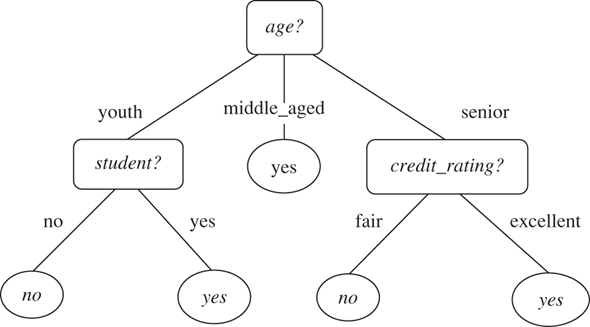Decision trees can become large and difficult to interpret. We look at how to build a rule-based classifier by extracting IF-THEN rules from a decision tree. In comparison with a decision tree, the IF-THEN rules may be easier for humans to understand, particularly if the decision tree is very large.
- Rules are easier to understand than large trees
- One rule is created for each path from the root to a leaf
- Each attribute-value pair along a path forms a conjunction: the leaf holds the class prediction
Example:

From the decision tree above, we can extract IF-THEN rules by tracing them from the root node to each leaf node:
Properties of extracted rules
- Mutually exclusive
- We cannot have rule conflicts here because no two rules will be triggered for the same tuple.
- We have one rule per leaf, and any tuple can map to only one leaf.
- Exhaustive:
- There is one rule for each possible attribute–value combination, so that this set of rules does not require a default rule.
- The order if rules is irrelevant.

